How To Create a Successful Affiliate Marketing Blog

From Zero to Hero: The Affiliate Marketing Blogging Handbook
In 2024, affiliate marketing continues to assert its dominance in digital commerce, evolving into an ever more complex and crucial part of online business strategy. This vibrant industry has skillfully adapted to the latest tech trends and shifts in consumer habits, securing its spot as a major force in the world of online sales and marketing.
Taking a closer look at affiliate marketing, it’s vital to acknowledge the significant strides it has made and the factors shaping its current state. The integration of artificial intelligence and machine learning has revolutionized how affiliate marketing is done, allowing for campaigns that are not only more personalized but also strikingly effective. Moreover, the rise of influencer marketing has opened new doors for affiliates, with social media becoming a key battleground for capturing consumer attention.
To grasp its effectiveness as a marketing powerhouse in our digital era, one must note the surge in investment. Reports from Statista indicate that U.S. spending on affiliate marketing has almost doubled since 2016, a testament to its growing importance and success.
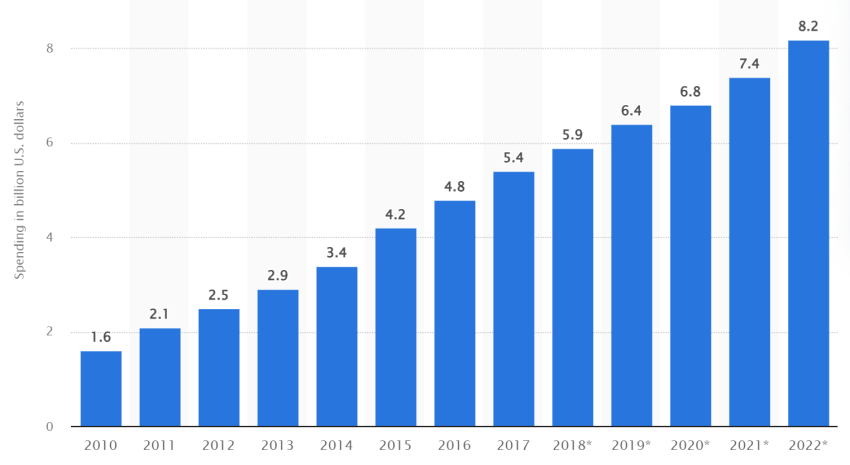
Source: Statista
In this landscape, the role of targeted blog content is crucial. It empowers affiliate marketers to guide potential buyers along their decision-making journey, using the power of SEO and social media to widen their reach. This synergy between blogging and affiliate marketing is essential, driving sales, fostering brand loyalty, and maintaining a steady revenue stream in a constantly changing digital marketplace.
What Is Affiliate Marketing?
It’s a performance-based marketing strategy where the advertiser — directly or with the help of an affiliate network — rewards affiliates for each lead brought by the affiliate’s own marketing efforts. Essentially, it involves four key players: the advertiser (or merchant), the publisher (or affiliate), the user, and affiliate networks.
| Advertiser (or merchant) | Picture these as the creative minds behind your favorite products or services. These businesses and entrepreneurs constantly seek new frontiers to conquer, aiming to spread the word about their offerings far and wide. Their mission? To ignite consumer interest and see their profit margins soar by connecting with more customers. |
| Publisher (or affiliate) | Enter the digital maestros – bloggers, website owners, and online marketers. They’re the ones who weave the merchants’ products into the fabric of their content, introducing their virtual communities to these finds. When a reader clicks a link, makes a purchase, downloads an app, or signs up for a service, the affiliate earns a commission. It’s their savvy strategies that turn curiosity into clicks and clicks into actions. |
| User | The heartbeat of the affiliate marketing lifecycle. With every click on an affiliate link and every completed action, be it a purchase or a subscription, they’re the ones who keep the wheels of commerce spinning. Their decisions fuel the entire system, rewarding the creativity of affiliates and the ingenuity of merchants. |
| Affiliate network | Think of them as the grand conductors orchestrating the complex symphony that is affiliate marketing. These networks lay the groundwork for smooth transactions, meticulously tracking each click and conversion, ensuring every affiliate gets their fair share for the traffic they’ve directed towards the merchants. |
How To Get Started With Affiliate Marketing Blogging
Define Your Niche
In the fast-paced world of affiliate marketing, defining your niche is like setting your GPS before embarking on a road trip—it’s essential to guide you to your destination. To pinpoint your niche in 2023, you must balance personal passion with market demand.
- Start by assessing current trends within the industry—wellness, sustainable living, and technology remain hot topics. Use tools like Google Trends or industry reports to understand what people are searching for and talking about. Before the pandemic, for example, consumers had begun to prioritize sustainability. And in 2021, almost 80% of responders are willing to pay more for recycled, sustainable, or eco-friendly materials.
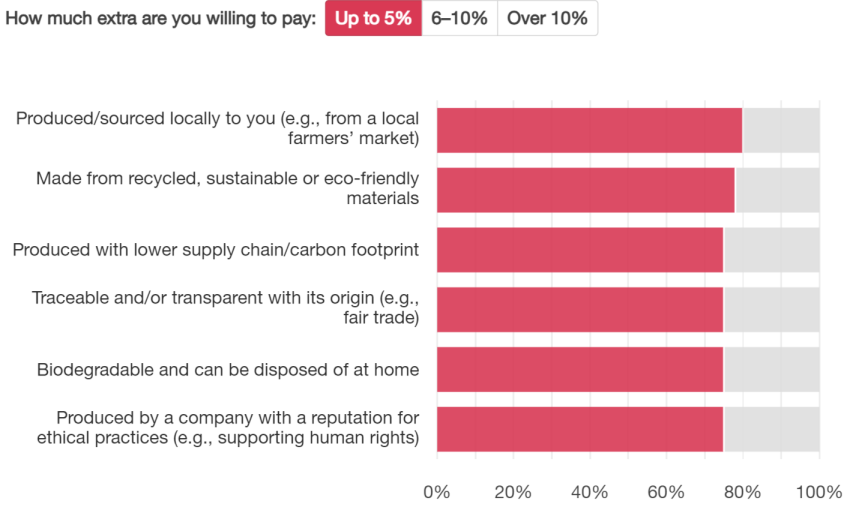
Source: PwC
- Highly competitive niches, teeming with affiliate marketing blog creators, can make it challenging for new entrants to gain visibility. For instance, the fitness and health niche has long been dominated by a multitude of influencers and affiliate marketing bloggers, making it a tough space for newcomers to stand out.
However, shifting your focus to less crowded spaces can uncover untapped potential. Take the rising interest in eco-friendly products and mix it with pet products as an example. The pet industry is seeing a significant consumer shift towards sustainability, with one report showing a 10% increase in sales for eco-friendly pet products year-over-year.
- Future-proof your niche by considering longevity. Fads come and go, but niches with staying power can sustain a profitable affiliate marketing blog long-term. For instance, the home automation market is expected to reach $163 billion by 2028, reflecting sustained interest in smart home technology, making it a promising niche.
Select a Robust Platform
In the evolving affiliate marketing world, establishing your affiliate blog on the right platform is pivotal. WordPress is the titan of choice, supporting 810 million websites, which is 43% of all websites on the internet, highlighting its versatility and popularity.
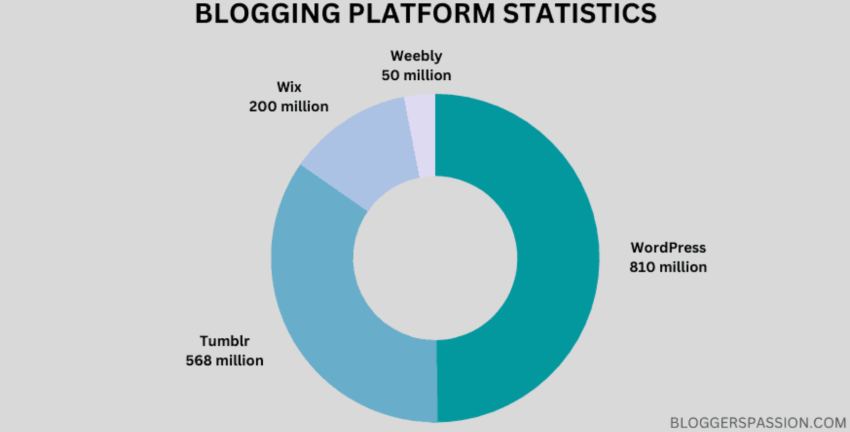
Source: BloggersPassion
With a robust community for support and a history of consistent growth, WordPress has expanded its market share by over 15% since 2017, signifying a stable, thriving environment for your affiliate marketing endeavors. Setting up your affiliate marketing blog here means joining a vast ecosystem tailored for success in affiliate marketing.
Set Up Your Affiliate Marketing Blog
- Ensure your blog’s design is mobile-friendly. In an era where 64.1% of global website traffic comes from mobile devices, a responsive design is non-negotiable. Your affiliate marketing blog must automatically adjust to fit the screen of any device, providing a seamless experience whether on a phone, tablet, or desktop.
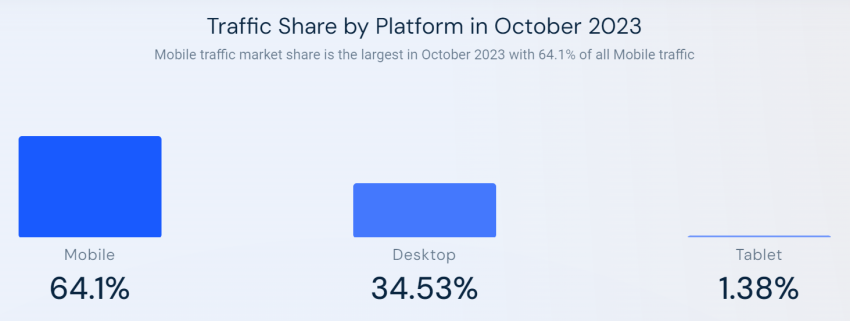
Source: SimilarWeb
- Optimize your affiliate marketing blog with SEO strategies. Use tools like Google Ads to find keywords related to your niche with high search volumes. Integrate these terms naturally into your titles, headers, alt text, meta descriptions, and throughout the content. This practice boosts your visibility in search engine results, drawing more organic traffic to your affiliate blogs.
- Ensure that your affiliate marketing blog loads quickly. Page speed loading is vital; it shapes first impressions and is a deciding factor for keeping visitors on your site. Slow speeds frustrate users, increase bounce rates, and can hurt your site’s visibility in search engine rankings.
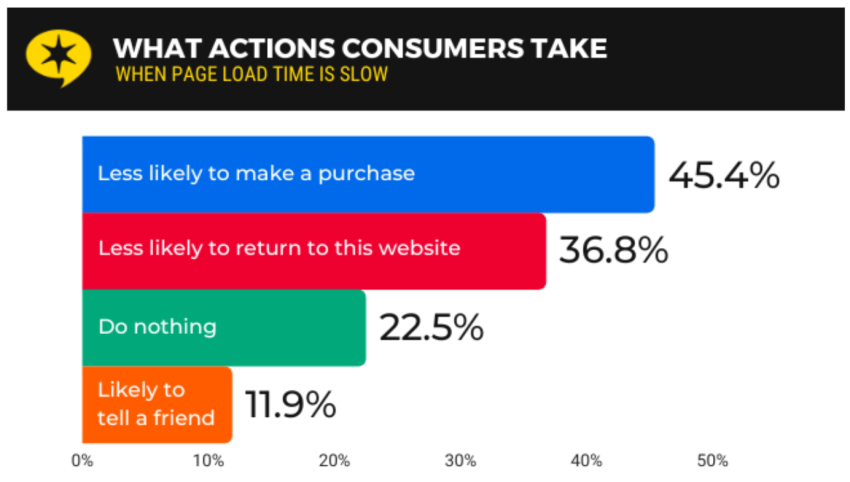
Source: Blogging Wizard
Choose Blogger Affiliate Program
Affiliate programs for blogs are the bread and butter of your revenue stream. They are agreements where you earn commissions by promoting a merchant’s products or services with the use of your affiliate marketing blog.
At this point, you’re probably wondering how to find the best affiliate programs for bloggers. Here are the most prominent ones:
- Amazon Associates
- ClickBank
- ShareASale
- eBay Partner Network
These programs allow you to promote any item from its vast catalog. You earn a commission for every purchase made through your affiliate links. When someone clicks your affiliate link and performs a specific action, you earn a percentage of the sale. But remember the rate can vary depending on the program and product category.
Build Your Audience
Driving traffic to your affiliate marketing blog and building an audience requires a multi-faceted approach.
- Social media platforms: Leverage platforms like Instagram, Facebook, and Twitter to share your content and engage with your community. Because social media is not just about entertainment anymore, almost three out of ten workers around the world say they use social media to get in touch with suppliers.
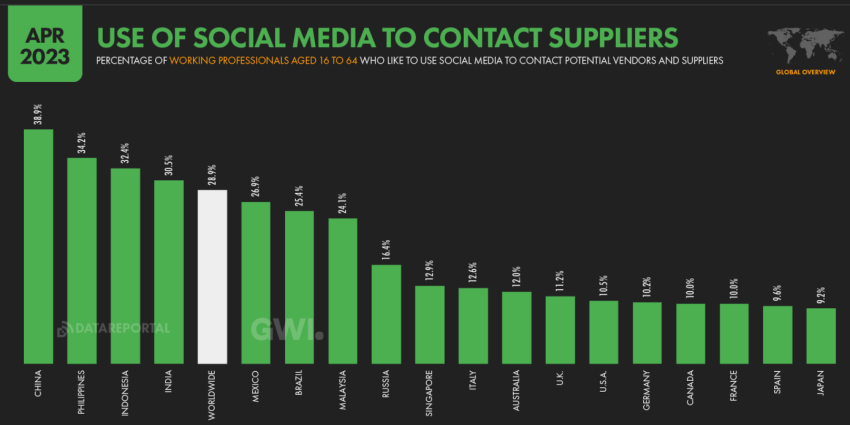
Source: DataReportal
- Email marketing: Start collecting emails right away to grow your subscriber list. Regularly send out newsletters with the latest news, sneak peeks of your upcoming content, and special deals. This is a great way to keep your readers coming back to your affiliate marketing blog.
- Community interaction: Join forums and online groups that match what your affiliate blog is about. Places like Reddit, Quora, or forums focused on your specific topic are good to start with. Help people out by sharing what you know, but don’t just push your blog. As you get to be known and trusted in these spaces, you’ll find the right moments to bring up your blog in a way that’s helpful to the conversation.
Analyze and Adapt
Get into using tools like Google Analytics for your affiliate marketing blog. It’s about seeing what your visitors are up to. Look at metrics like page views, bounce rate, and time spent on each post. For example, if you notice that articles about eco-friendly products have higher engagement rates, consider focusing more on this niche. Also, keep an eye on which products from your affiliate links are getting clicked on and bought. If certain items are hitting it off, maybe give them more spotlight in your posts.
Top 5 Affiliate Marketing Strategies
Research Different Affiliate Networks
When you spread out your partner networks, you’re not putting all your eggs in one box. It means signing up for more than one partner program to sell more goods and services. This approach can help you make more money and lower the risk of depending on just one source.
You could join an affiliate program from a company that makes eco-friendly home goods, one that makes eco-friendly clothes, and one that makes eco-friendly tech items, for example. This method not only helps you make more money but also fits the interests of your audience, who care a lot about sustainability. Many eco-friendly programs are out there because over 81% of brands use affiliate marketing. This gives you a lot of choices for diversity.
To find these different networks, look into advertising programs that fit with the topic of your affiliate marketing blog and the tastes of your readers. Look for networks that have a good reputation for paying affiliates on time and giving them good help.
Use Retargeting Campaigns
Retargeting campaigns work like a reminder for people who’ve visited your affiliate blog but didn’t buy anything. Imagine someone browses your post about eco-friendly gadgets and leaves. Later, as they’re online, they see an ad for those gadgets.
It’s a little memory jog that could lead them back to your site to buy. It’s pretty effective, too. Retargeting can boost ad response by up to 400%, making it a highly effective tool for affiliate marketers.
Explore Native Advertising
Native advertising, when used in affiliate marketing blogs, can significantly enhance their effectiveness. This form of advertising blends seamlessly with your content, making it less disruptive and more engaging for readers. For instance, if your blog focuses on eco-friendly living, you can integrate native ads for sustainable home products or green beauty items. These ads appear to be 62% easier to understand than display ads.
Conduct A/B Testing
A/B testing is about comparing two versions of a web page, email, or ad to see which one performs better. Say you have two different layouts for a blog post about eco-friendly kitchen gadgets. Version A has a big product image at the top, while Version B integrates a video review. A/B testing lets you see which version leads to more clicks and sales. The importance of A/B testing is that using this method can improve conversion rates by up to 49%. This shows how tweaking small elements can significantly impact your affiliate marketing blog’s success.
Build Partnerships
Building partnerships in affiliate marketing blogging can vastly expand your reach and credibility. When you collaborate with other bloggers or influencers, especially those in similar niches, you tap into their audience base, which can significantly increase your visibility.
- Look for other affiliate marketing bloggers or influencers whose interests and values align with yours.
- Show genuine interest in their content by liking, commenting, and sharing.
- Drop them a personal message or email letting them know you appreciate their work and suggest ways to work together.
- Explain how working together could be good for both of you. Be clear about what you bring to the partnership.
- Once you team up, collaborate on posts, share each other’s affiliate marketing content, or even host online events together.
Best Online Tools for Affiliate Marketing Blogs
- SEMrush or Ahrefs: Think of SEMrush and Ahrefs as your go-to tools for upping your SEO game on your affiliate marketing blog. Say your blog is all about eco-friendly products. These tools are like a treasure map showing you the popular search terms, like “eco-friendly kitchenware” or “sustainable fashion.”
Not just that, they also give you a peek into what similar affiliate blogs are doing – what keywords they’re using and who’s linking back to them. This kind of info is super useful for tweaking your posts so that they climb up the search engine ladder, helping you get more eyes on your blog.
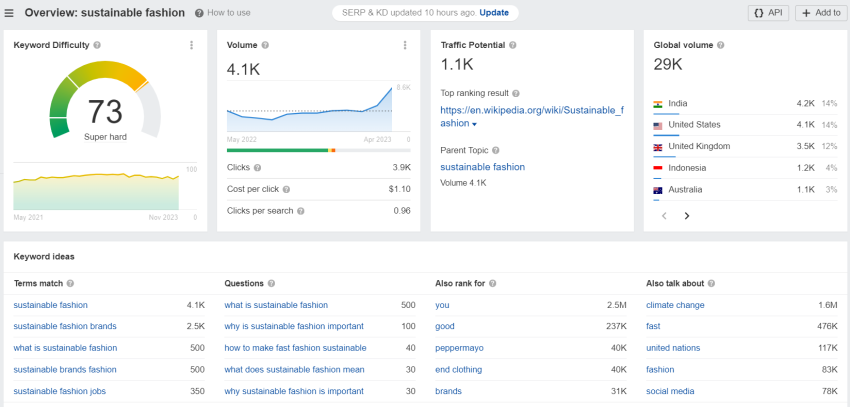
Source: Ahrefs
- Canva: It is a great tool for affiliate marketing bloggers who want to spice up their posts and social media with cool graphics. It’s easy to use, even if you’re not a design pro. You can create bright and bold headers for your blog, make posts for Instagram, or design pins for Pinterest. Canva has loads of templates and images you can play around with. On top of that, it’s perfect for creating graphics for your affiliate marketing campaigns if you’re aiming to catch the eye and show off the products you’re promoting. You can put together infographics to explain the perks of a product or craft banners for any special promos you’ve got going.

Source: Canva
- Mailchimp: This is yet another great tool for people who run affiliate marketing blogs. Emails and newsletters are the best ways to stay in touch with your readers. It lets you share news about your newest posts, reviews of affiliate goods, or cool deals you may have. Mailchimp also lets you know which emails are doing well and who is reading them, so you can change how you write them to keep your readers interested.
- Hootsuite: It’s a comprehensive social media management tool perfect for affiliate bloggers. It lets you schedule, manage, and post content across multiple social media platforms from one dashboard. You can use Hootsuite to plan and publish posts on Facebook, Twitter, and Instagram at the best times for engagement.
Key affiliate marketing tips using Hootsuite:
- Plan your content calendar and schedule posts for peak times to reach a larger audience.
- Use the analytics feature to track how your posts perform and tweak your strategy based on the data.
- Engage with your audience by promptly and eagerly responding to comments and messages through Hootsuite’s dashboard, keeping the conversation going.
-
- Grammarly: This tool acts like your personal editor, which is especially handy for anyone in affiliate marketing. It’s great for ensuring your blog posts are easy to read and mistake-free. Grammarly will spot and fix any typos or grammar hiccups, and it can even help make your writing sound better. It’s really useful for affiliate marketers who want to ensure their posts are clear and engaging because Grammarly handles all the grammar stuff, letting you focus on sharing your thoughts and product insights.
- Trello or Asana: Project management tools like Trello or Asana are lifesavers for keeping your blogging tasks in check. Picture this: You’ve got a Trello board set up for your blog. It’s divided into sections like “Ideas,” “In Progress,” and “Published.” Each blog post is a card that you move through these stages. This system is super helpful for affiliate marketers. It keeps you on top of different campaigns, helps organize your ideas for the affiliate marketing blog, and coordinates with brands or fellow writers. It’s like having a personal assistant to help manage all your blogging needs.
Charting the Future: Affiliate Marketing Blogs in 2024 and Beyond
The world of affiliate marketing blogs is about to enter a period of unrivaled innovation and inventiveness in the year 2024. It is no longer sufficient to simply embed links; instead, attention must be paid to the creation of stories and unique, memorable experiences. Bloggers are becoming more open to new technologies and tools, using the power of data analytics and search engine optimization (SEO) to better understand and communicate with their audience on a more profound level.
Affiliate marketing blogs are rapidly evolving into thriving online communities because of the growing importance of social media platforms and collaborative efforts involving influential users. This development paves the way for exciting new options and suggests a future in which affiliate marketing blogs will not only provide useful information but also serve as a center for digital connection and participation.
Open Market by Zero Parallel offers affiliate marketers a dynamic platform to access diverse, high-quality leads. It streamlines connecting with potential clients, optimizes lead distribution, and enhances campaign efficiency, ultimately boosting revenue and performance in the competitive affiliate marketing landscape.
Contact us to learn how Zero Parallel can fine-tune and scale your affiliate program, or join as an affiliate today to embark on your own journey in performance-driven marketing.
Frequently Asked Question
How to get into affiliate marketing
To start with affiliate marketing, first, choose a niche you’re passionate about. Create an affiliate marketing blog or website focused on this niche. Then, sign up for affiliate programs relevant to your content, like Amazon Associates or Commission Junction. Successful affiliate marketing relies on producing valuable content and building an audience that trusts your recommendations.
How to get affiliate links for a blog
Join affiliate networks like Amazon Associates or ShareASale. After signing up, select products relevant to your blog’s niche. You’ll receive unique affiliate links for each product, which you can then integrate into your affiliate blog content.
How do you create a blog for affiliate marketing?
Choose a niche, set up an affiliate marketing blog using platforms like WordPress, produce high-quality content, and incorporate affiliate links. Focus on topics that resonate with your target audience to ensure engagement.
Can you really make money from affiliate marketing?
Absolutely! Affiliate marketing can be lucrative if you strategically promote products and services. Earnings come as commissions from sales made through your affiliate links, dependent on your blog’s traffic and engagement.
How important is SEO for an affiliate marketing blog?
SEO is vital for increasing your blog’s search engine visibility, attracting organic traffic, and boosting the overall effectiveness of your affiliate marketing.


